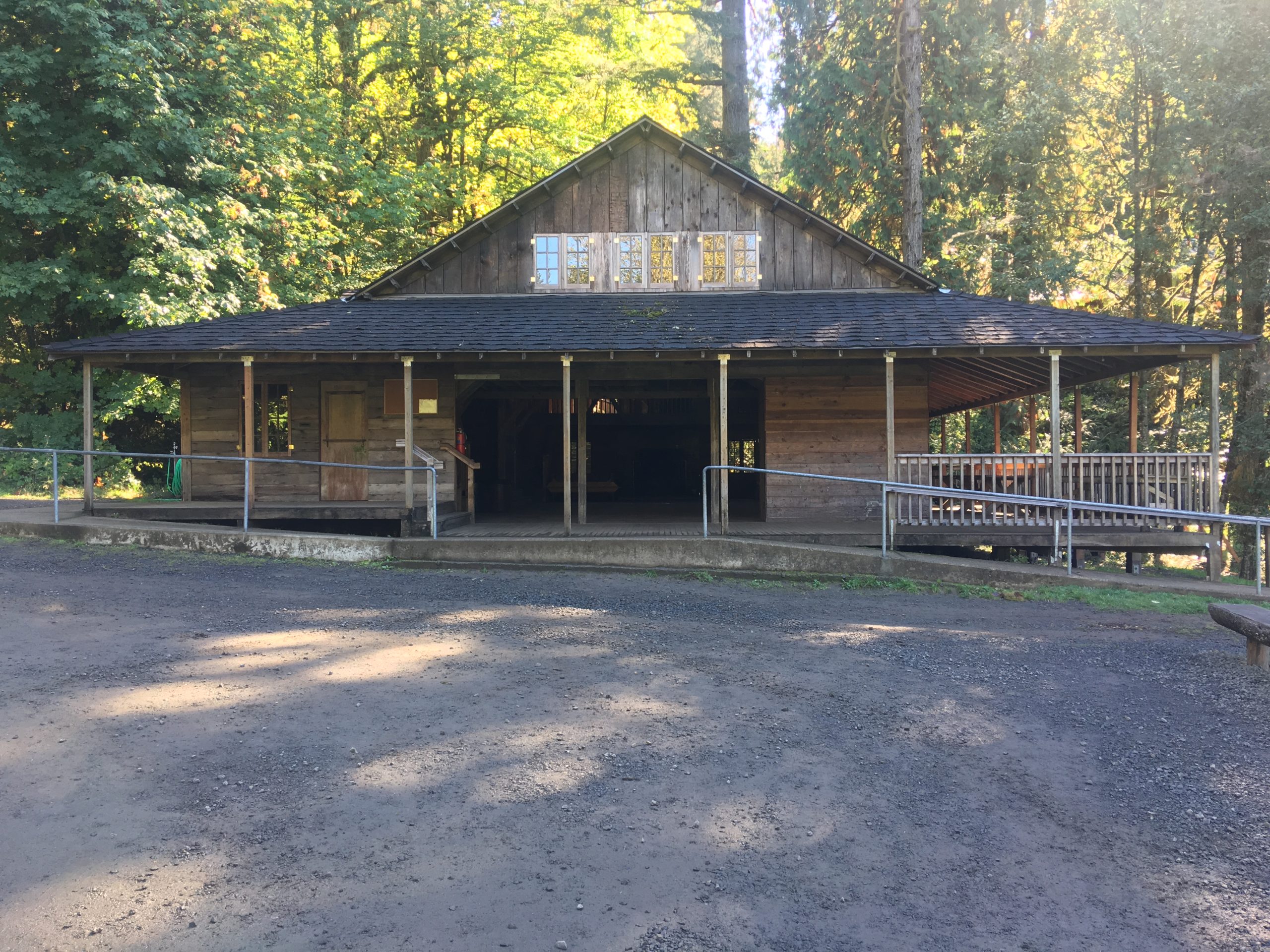
Up for nomination to the National Register of Historic Places next week, Camp Namanu is a historic summer camp founded in 1924 for the Camp Fire Girls organization. Located in a densely forested area along the Sandy River in Clackamas County, the camp has multiple wood buildings and structures built in the rustic style. Within the proposed historic district, there are 70 contributing resources that include different types of buildings, such as lodges, cabins, and community buildings, structures, sites, and objects, which are organized in groupings that serve different purposes and functions. Designed by Pietro Belluschi and built in 1932, Uncle Toby’s Cabin (also called Uncle Toby’s Story House), pictured above, was Camp Namanu’s first multipurpose lodge.
Growing up there were many shows flashing on the screen to choose from, but no other show could quite capture my attention like Curious George. My parents would attempt to entice me with something else, but I could not find another character that I related to as much as a mischievous little monkey named George. My parents were fascinated that I was obsessed with a monkey and a man in a yellow hat, but they didn’t look beyond the colorful animation and the weird music. While Curious George, a beloved children's character created by H.A. Rey and Margret Rey, may seem insignificant to most, it’s a great analogy for how I approach life: growth isn’t a linear process and failure is key in that.
In many ways, my perspective on learning mirrors the misadventures of a this influential cartoon character. As a preschooler, I was constantly asking my mom questions like “How do clouds form?” and “Why can fish breathe underwater and we can’t?” Curious George just didn’t accept an explanation about how something worked, he went out and experienced it for himself. The show mirrored my own sense of curiosity, adventure, and love for nature. I would often watch a show about bugs and how they live, then run to my backyard and search under every rock to find them. I spent much of my early childhood outside; sprinting through my backyard, tangled hair whipping behind me, picking all the different types of leaves I could find from my garden.
As a younger child, I struggled a bit in school, finding it difficult to focus in the classroom. Thankfully, my elementary and middle schools’ curriculum focused on the using the scientific method, where teachers guide students through the practice of inquiry and discovery to promote curiosity and connection. Instead of learning through textbooks, teachers asked questions and invited students to use what we already knew about a topic to construct new ideas. We would then test those ideas through hands-on experiences to further our critical thinking skills. From going on field trips to nearby lakes to researching how gravity works in space, I thrived looking at the world through a curious lens. Scanning through the cold water searching for the camouflaged caddisflies and recording how many I found with my peers were some of my favorite school memories. I discovered that I do best when I can collaborate with my peers to achieve a common goal. I loved learning about the world in a way that allowed me to be creative and contribute my opinions. I was inspired by this way of learning and still am today.
This learning environment made me feel free to make mistakes. Education can be a difficult thing to grasp, but seeing how George made mistakes in the learning process made me feel comfortable to not get it right the first time. Viewing the pursuit of knowledge as a series of attempts and failures has helped me have an optimistic view of education and the challenges I’ve faced. George has shown me that the world is full of wonders waiting to be discovered, and that, like George, I can be an agent of curiosity and change. As I grew up, I learned that curiosity was not just a fleeting emotion but a driving force for discovery and personal growth.

